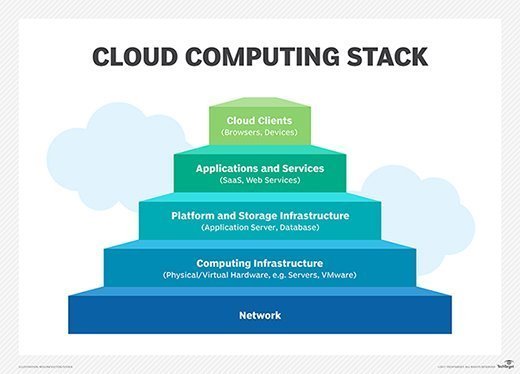
ra2 studio - Fotolia
7 tips to manage cloud sprawl in your enterprise
Cloud sprawl can lead to all sorts of unwanted surprises. Review these recommendations to get control over all the cloud resources across your business.
Organizations run into all sorts of problems when there is a lack of visibility and control over their cloud resources. Cloud sprawl is one of the biggest pitfalls associated with minimal oversight.
Cloud sprawl refers to the unchecked proliferation of an organization's cloud instances, services and service providers. It can lead to unexpected costs, security vulnerabilities and management nightmares.
It's critical for businesses to put controls in place to monitor their assets and prevent things from getting out of hand. Follow these tips to help manage cloud sprawl in your organization.
Create, maintain and evangelize a cloud strategy
Start by creating a cloud strategy and evangelize it across business units and departments. A proper cloud strategy covers a range of operations and management topics, including policies for migrations, users and role-based access controls. Your strategy needs to reflect the latest changes in your business strategy and roadmaps.
It should be a written document, published to a central repository and accessible to your organization's developers and stakeholders. Treat it as a reference document; don't rely strictly on an oral history or PowerPoint slide deck.
Don't let your cloud strategy sit in a SharePoint folder, either. You want to promote it internally when the opportunity presents itself. For example, include an introduction to your cloud strategy as part of developer onboarding; communicate reminders and updates of your strategy as part of an internal communication program. Also, project charters and other documentation should reflect your strategy when appropriate.
Develop, implement and iterate cloud policies
Policies, which should be part of your overall cloud strategy, are another tool to manage cloud sprawl, as long as technology and business teams work together to implement them.
For example, suppose you want policy controls that enable the automatic shutdown and de-provisioning of workloads and VMs. You'll need input from the business side about when it's OK to shut down those resources so the policy accurately reflects the needs of your current operations.
If your organization has BYOD, consider how those devices interact with your data and approved services. Likewise, you'll need governance policies to prevent your corporate data from finding its way to potentially unapproved cloud services.
Map your journey with a cloud migration framework
A well-documented cloud migration framework charts a course for your business units from on premises to the cloud. It should cover how your organization manages resources, including integration, configuration automation, as well as capacity and resource automation. It should also document how to handle multi-cloud management, including service catalogs or self-service portals for users, dashboard reporting, and multi-cloud provisioning or orchestration.
The framework should extend to governance, including policy execution and management, cost optimization and SLA management. It should focus heavily on security and compliance, regardless of your industry.
Implement a cloud management platform
Use the tools available through a cloud management platform, such as CloudBolt or CloudTamer, to get an initial handle on sprawl in multi-cloud environments. These services can be used to implement a management and governance strategy that guides your managers, stakeholders, developers and operations teams throughout the whole application lifecycle -- from provisioning to deployment to operations.

These cloud management platforms provide a unified view -- often called a single pane of glass -- to monitor the cloud services that run your development, test and production environments. They can do this across multiple clouds, too.
Regularly conduct resource audits through your management platform to help keep cloud sprawl in check. A cloud audit needs to include applications, compute, storage, security and any other infrastructure components. The audit should consist of your dev, test and production environments.
A proper audit also accounts for potential risks and updated security requirements. Security and compliance teams should look at vulnerabilities, evaluate controls and create a risk management framework to address these issues. An audit also serves to ensure any proposed changes comply with your organization's security policies and compliance standards.
Cloud management platforms also enable you to implement a self-service cloud brokerage with a preapproved service catalog. This is another tool to counter cloud sprawl, since a brokerage gives you the governance and budgeting tools needed to monitor and govern developers' cloud usage.
Practice cloud cost optimization and embrace cloud economics
Monitoring cloud spending isn't just for your finance department. If you use Microsoft Azure, a cloud cost management tool such as Azure Cost Management + Billing, formerly Cloudyn, can document cloud spending across your enterprise -- even on other platforms. AWS and Google also have cost management tools, but they only track costs on their respective platforms.
There's also a growing ecosystem of third-party services, such as Apptio Cloudability or CloudHealth by VMware, to help control costs. Many of these tools support multiple platforms. For example, you could use CloudCheckr to optimize spending plus receive a right sizing report with actionable insights about optimizing your spending across your environments.
Invest the time to create usable alerting, reports and workflows that best support your cloud operations and business teams. And don't be afraid to iterate on the reports and workflows as your cloud economics expertise matures.
Educate your developers and stakeholders about the cloud
Another way to prevent cloud sprawl is to get your developers and principal stakeholders cloud certified. Your developers will gain a deeper understanding of cloud service and knowledge of the latest best practices. Your key stakeholders will become conversant about cloud services beyond the buzzwords.
There are more options now than ever for enterprises to offer their employees certifications. There's traditional instructor-led training -- sometimes hard to schedule for busy IT staff -- and online cloud training from A Cloud Guru/Linux Academy, Cloud Academy, Pluralsight and others. There are also exam preparation books available for the popular cloud certifications, if your employees learn best that way.
Corporate cultures and employee attitudes about training run the gamut, so you may need to tie training to manager and employee professional goals to ensure the training takes place.
Involve the whole business in cloud management and governance
Cloud management and governance can't be the domain of just a cloud team or even an IT department. To properly manage cloud sprawl, you need to involve business and technology stakeholders in a transparent and collaborative manner.
This will help ensure stakeholders are full participants in your cloud initiative. It can also break down silos between technology and business teams so they can all be a part of any major decisions around your strategy.
Many experts believe change management is a standard way to prevent cloud sprawl, but this can actually be an impediment in the wrong bureaucratic hands. Put people before change management, so you create cross-functional teams that work together to address management and governance.








